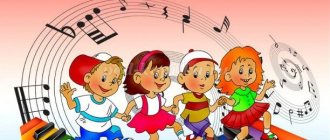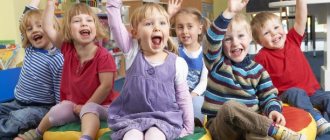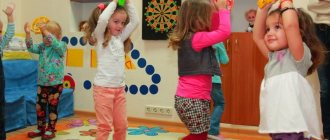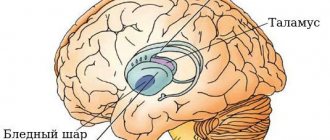Speech therapy rhythms in theory and practice are the focus of each of the publications in this thematic section. Here you can find useful tips and advice for teachers; ready-made notes for logorhythmic classes, theatrical performances, gymnastics and games.
You may find that special methodological developments on the use of logorhythmic exercises in integration with classes of a completely different focus will be useful in your work. Check out the positive experiences of your colleagues in children’s speech development and feel free to take note of them.
We develop speech, voice, memory using proven logorhythmic methods.
Contained in sections:
- The work of a speech therapist. Speech therapy 8270
By groups:
- Senior group
- Preparatory group
- Middle group
- Junior group
Showing publications 1-10 of 1456. All sections | Logorhythmics. Logorhythmic exercises
New
Photo
The best
Notes for a logorhythmics lesson in a senior speech therapy group “Hello, autumn, hello, forest full of fairy tales and miracles.” Notes for a logorhythmics lesson in a senior speech therapy group . Topic: “Hello, autumn, hello, forest full of fairy tales and miracles!”
Objectives: 1. Development of spatial orientation. 2. Development of coordination of speech with movement. 3. Development and activation of attention. 4. Development...
Elements of speech therapy rhythms in music classes as a means of developing general motor skills Music is one of the brightest and most emotional forms of art, the most effective and efficient means of raising children. It helps to more fully reveal the child’s abilities, develop hearing and sense of rhythm, and teach him to correctly perceive the language of musical images. Introducing kids to...
The musical framework of speech reflects its emotional richness. At its original basis, the musical framework rests on sound, which developed from primitive vocal gestures, cries of joy, surprise, despair, etc. Vocal reactions are closely related to facial and pantomimic gestures. Musical speech and pantomime, subordinate to intellectual and social functions, are also used to express semantic content and mutual communication. Yu.A. Florenskaya and V.A. Griner emphasized the interest of researchers in the prosodic side of speech. The German neurologist of the 19th - early 20th centuries A. Pick noted the importance of the emotional and musical side of speech for identifying one or another semantic content. Neuropathologist M.B. Krol wrote that the rhythm and melody of a phrase should be given decidedly greater importance. Even pauses are not something passive, but should be considered as an active process of inhibition, the disorder of which can lead either to monotony of speech or to distortion of the entire structure of the phrase. The German researcher Skripcher devoted a number of works to prosody disorders. He recorded sound waves of speech of patients with aphasia, which provided diagnostic material for their clinical examination.
In the 50-70s, works on speech therapy rhythms appeared regarding the elimination of stuttering in children. In 1958, the work of V.A. was republished. Griner “Speech therapy rhythms for preschoolers.” In 1960 V.I. Rozhdestvenskaya, in her work “Speech Education for Stuttering Preschoolers,” emphasizes the role of exercises for combining words with shifts. The rhythm of the movements produced helps normalize speech. This technique has entered the practice of speech therapists under the name “speech with movement.”
In the works of E.F. Shershneva, E.F. Pay noted the importance of speech therapy rhythms in the correction of stuttering in preschool children. E.F. Shershneva offered specific material for children 2-3 years old: songs, play exercises, short dramatizations of poems, round dances from the collections of T.S. Babajan, V.I. Rozhdestvenskaya and E.I. Radina, her own material and some methodological techniques for conducting classes, determined by the age of the children and the characteristics of their neuropsychic state. Children 2-3 years old who stutter, nervous, negative, with traits of lack of will, absent-mindedness, lethargy or emotional excitability, arrhythmic, with impaired coordination of movements, require careful treatment. During musical-rhythmic classes, drills should be avoided with them and should not be required to accurately perform rhythmic movements to the music. Recommendations E.F. Shershneva is important that in speech therapy science and practice, the issues of correctional techniques for stuttering preschoolers have not yet been developed, and the influence of speech therapy rhythms on children has not been sufficiently studied.
Consultation for teachers and parents “Logorhythmics as a means of speech correction”
Elena Titova
Consultation for teachers and parents “Logorhythmics as a means of speech correction”
Logorhythmics as a means of speech correction
Speech development delay (SDD) in young people has become a particularly pressing problem in recent years. For various reasons, there are more and more children with delayed speech development. But undeveloped speech is not such a terrible problem if it is detected in time and not started.
Unfortunately, a large number already at birth have various congenital mental and neurological diseases that provoke speech underdevelopment.
Normally, preschoolers complete mastery of the sound structure of language by the age of 5. For many children, this process is delayed for a number of reasons. And as a rule, these are children of the so-called “Risk Group” for speech pathology, with various unfavorable development factors. These are children with organic lesions of the central nervous system of various etiologies; premature and low birth weight babies; children born with birth asphyxia; with disorders in the anatomical structure of the speech apparatus; having somatic genetic, chromosomal diseases; infections; difficult birth of the mother (rapid, premature, umbilical cord entwined around the neck). And also the lack of adequate pedagogical conditions, deprivation, which is important for full development. And timely mastery of correct, clear speech contributes to the formation of self-confidence in the child, the development of his thinking, and communication skills. And therefore, the question of the development of a child’s speech is especially important in the development of his personality. What seems unimportant or insignificant in the preschool period can turn into a serious problem later on.
And if we talk about early age, then in the third year of life the child’s speech becomes the dominant line of development. In normally developing children, their vocabulary quickly expands, their ability to construct sentences improves, and the sound aspect of speech improves. The same cannot be said about children with limited vocabulary, who stand out quite clearly among their peers.
The main feature of the speech of children with developmental disabilities is a pronounced deficiency of expressive vocabulary. Corrective work with such children depends on the degree of speech development delay and the techniques used.
In speech therapy practice, various methods and techniques are used to “start the speech of non-speaking children.” And one of the effective methods of overcoming speech disorders is logorhythmics
.
Speech therapy rhythmics is a correctional method of training and education of persons with various developmental anomalies, including speech pathology, the purpose of which is to overcome speech disorders by developing the child’s motor sphere in combination with words and music.
For the first time, methodological recommendations for its implementation were developed by V. A. Griner, who Fr. (Griner V.A. “Speech therapy rhythm for preschoolers.” M., 1958). Music is used to regulate the tempo and nature of the child’s movement, develop the melody of the voice, its intonation coloring and the ability to coordinate singing, speech and movement into a single whole.
Logorhythmics has a positive effect on general tone, motor skills, and mood. Develops attention, its concentration, volume, stability, memory, develops visual perception and auditory attention, develops rhythm.
In the system of logorhythmic work with young children, two directions can be distinguished:
1. impact on non-speech processes:
• improvement of general motor skills, coordination of movements, orientation in space; regulation of muscle tone;
• development of a sense of musical tempo and rhythm, singing abilities; activation of all types of attention and memory.
2. speech processes:
• development of breathing, voice;
• development of a moderate rate of speech and its intonation expressiveness;
• development of articulatory and facial motor skills;
• coordination of speech with movement;
• education of correct sound pronunciation and the formation of phonemic hearing.
Corrective tasks of logorhythmics include: overcoming the main speech disorder, developing breathing, voice, articulation, as well as developing and improving basic psychomotor qualities (static and dynamic coordination, switchability of movements, muscle tone, motor memory and voluntary attention) in all types of motor sphere ( general, fine, facial and articulatory).
All exercises are carried out by imitation.
Logorhythmic activities are plot-based, accessible and interesting to children. Verbal material is selected in accordance with the topic of the lesson, it is easy to remember, which helps to enrich the vocabulary and normalize the child’s speech, regardless of the type of speech disorder, forming a positive emotional mood.
Classes are held in a fascinating, entertaining, relaxed, musical, emotional environment. They help solve the problems of the educational, educational, health, and direct correctional process.
Logorhythmics in complex therapy of stuttering in adults
Logorhythmics in the complex treatment of stuttering in adults helps overcome speech defects by developing the necessary qualities of general and speech motor skills.
Movement as a result of the influence of mechanical energy on the human body has been used as a preventive and therapeutic agent since ancient times, even during the birth of medicine. Treatment through movement involves the use of all types and forms of movement as a healing factor.
Modern Bulgarian scientists L. Bonev, P. Slynchev, St. Banks propose the term “kinesitherapy” to refer to this type of therapy.
Therapeutic rhythm is part of kinesitherapy. Its task is to develop a sense of rhythm using a system of physical exercises accompanied by music and use it for therapeutic and correctional purposes.
An integral part of therapeutic rhythm is speech therapy rhythm .
For speech therapy rhythms, research is important that provides knowledge about the connection and dependence of general and speech motor skills. Research on the physiology of movements and physiology of activity by N.A. Bernstein showed a hierarchical level system of regulation of motor functions, including speech. N.A. Bernstein attributed speech to the highest level of organization of movements - the cortical speech motor level of symbolic coordination and psychological organization of movements. N.A. Bernstein developed and put forward a theory of level organization of movements, including subcortical and cortical levels:
A - level of paleokinetic regulation, also known as the rubrospinal level of the central nervous system; provides unconscious regulation of body muscle tone with the help of proprioception, static endurance and coordination (rolling balls with the palm of the hand, grasping an object, adopting and holding a pose, fanning).
B - level of synergy and stamps, also known as thalamopallidal level; provides correction, internal coordination of the integral movement, coordination of its component parts, expressive movements, facial expressions, pantomime, plasticity (dressing, ability to fight).
C - level of the spatial field, also known as pyramidal-striate; ensures coordination of the motor act with external space with the leading role of visual afferentation, movements of a target nature, having a beginning and an end. Level C is divided into two sublevels:
C{ - striatal, belonging to the extrapyramidal system, the lower sublevel of the spatial field; assesses the direction of movement and doses the force along the movement (lacing, combing, flipping, tracking a moving finger, tracing a figure on paper).
C2 - pyramidal, belonging to the group of cortical levels, the upper sublevel of the spatial field, which is a complex afferentation system of the visual-spatial field; provides maximum target accuracy (rolling balls into holes, threading a needle, drawing a circle).
D - level of action, also known as parieto-premotor, cortical. The leading afferent system is the idea of an object. Afferentation is based on the semantic side of action with an object. The spatial field acquires new topological qualitative categories (top, bottom, between, above, before, then). The semantic logic of the action often does not correspond to the logic of geometric space (opening by unscrewing). The contingent of movements is self-service in a broad sense, all subject, labor and production activities, sports games. Awareness of the right and left sides of the body.
E - the highest cortical level of symbolic coordination and psychological organization of movements; understands someone else’s and one’s own speech, the content of the problem being solved, and expresses one’s thoughts in writing and orally; musical, choreographic performance (oral speech, written expression of thoughts, improvisation of movements). Actions at this level are based on imaginative thinking.
Soviet psychologists M. O. Gurevich, A. A. Leontyev, A. R. Luria pointed out the connection between speech and expressive movements, motor and speech analyzers, and the connection between the form of pronunciation and the nature of movements.
Research by L. A. Kvint and M. I. Dotsenko indicates positive correlations of general mental development with the development of voluntary facial motor skills. Similar connections in stuttering were pointed out by L.N. Murakhovskaya and V.M. Aristov.
Particularly important for logorhythmic education are data on the correlation between the degree of development of fine motor skills of the hand and the level of speech development in children.
Thus, the Soviet physiologist M. M. Koltsova believes that
“There is every reason to consider the hand as an organ of speech - the same as the articulatory apparatus. From this point of view, the projection of the hand is another speech area of the brain.”
From the history of musical education
At the beginning of the 20th century. In many European countries, the system of rhythmic education has become widespread. It became known as the “method of rhythmic gymnastics.” Its creator was the Swiss teacher and musician Emile Jacques-Dalcroze (1865-1950). E. Jacques-Dalcroze taught at the Geneva Conservatory. He was struck by the irregularity of the students. Dalcroze believed that a musician needed not only a good ear, but also a good rhythm. He decided to separate musical rhythmics into a separate branch of music pedagogy and “to cultivate the rhythmic feeling in itself.” Dalcroze made music his traffic controller.
What is the essence of the method of E. Jacques-Dalcroze? Using a combination of rhythm, music and movement, he solved the problem of “cultivating rhythm with the help of rhythm”
The Jacques-Dalcroze system was further developed in the works of his students and followers. Much credit for this belongs to N. G. Alexandrova and V. A. Griner. N. G. Alexandrova emphasized the importance of rhythmic education in school, which should be conducted on the basis of a close combination of rhythm and music (based on the Jacques-Dalcroze method).
On the initiative of N. G. Alexandrova, the Moscow Association of Rhythmists is being organized in Moscow at the State Academy of Artistic Sciences (GAKhN), which has developed a program of rhythm classes for music educational institutions (schools, technical schools, conservatories), formulated methodological instructions for the program and systematized methodological and musical notation. material. Russian rhythmists from Moscow and Leningrad in the 1920s developed a method of musical and rhythmic education in relation to the requirements of our time.
As N. G. Alexandrova wrote, the main principle of the Moscow school is to free Dalcroze’s rhythm from that touch of extreme aristocratic intellectualism, that difficulty and aspiration for virtuosity, which in the West make this system the property of a narrow circle of the few, especially gifted.
Rhythm according to the Jacques-Dalcroze system, based on the principle of accessibility, is one of the means of combating arrhythmia, which has a destructive effect on the psychophysical and social life of a person.
In our country in the 30-40s, the system of musical and rhythmic education was developed by N. G. Aleksandrova V. A. Griner, N. P. Zbrueva, E. V. Konorova, M. A. Rumer, E. P. Shepulin. V. Slepovich et al.
N. G. Alexandrova in her early works (30s) emphasized the importance of the differentiated use of rhythm depending on the age of people and their state of health.
The pioneer of introducing therapeutic rhythms into the system of treating neurotic patients is prof. V. A. Gilyarovsky. Under his leadership in 1926 at the neuropsychiatric hospital named after. Solovyov (former Donskaya hospital) a special system of therapeutic rhythms was created for children and adults. In practice, this system was implemented by rhythmist V. A. Griner, who, like N. G. Alexandrova, graduated from the Jacques-Dalcroze Institute of Music and Rhythm in Hellerau. In her work with the mentally ill, she used such a positive factor of rhythm as its collective principle.
Therapeutic rhythms were also used in speech therapy institutions in the 1930s.
In the system of rhythmic influence on people with speech pathology, the leading place is occupied by the word. In this regard, a special direction of influence in rehabilitation methods is being formed - speech therapy rhythm. Initially, speech therapy rhythms were used in work with stuttering preschoolers on the initiative of V. A. Gilyarovsky and N. A. Vlasova. In their article “Speech therapy rhythms” (1936), V. A. Griner and Yu. A. Florenskaya first raised the question of developing special speech therapy rhythms for classes with stutterers in order to improve their speech.
V. A. Griner has developed practical material for adults who stutter. She considered it necessary to become familiar with the characteristic features of the patient’s motor skills upon admission and upon discharge, paying special attention to the state of muscle tone, gait, hand movements, tempo of movements, stability of attention and memory, forming, depending on this, the approach to the patient and the requirements for him. V. A. Griner emphasized that the fundamental difference between speech therapy rhythm and the method of rhythmic education is that in the exercises special attention is paid to the word.
V.I. Dresvyannikov, studying the characteristics of motor skills of stuttering schoolchildren in grades VI-VIII, identified a relationship between the development of motor skills and expressive speech, between the degree of stuttering and the degree of motor impairment, and proposed a system of physical exercises to eliminate stuttering in schoolchildren aged 12-15 years. V.I. Dresvyannikov emphasizes the great potential of speech therapy rhythms in re-educating the speech of people who stutter, provided that classes are conducted in a qualified manner.
The method of musical and rhythmic education of E. Jacques-Dalcroze began to be used abroad for therapeutic and pedagogical purposes. In the 60s of the XX century. Polish logorhythmist Aurelia Rosenthal made an attempt to introduce elements of rhythmoplasty into speech therapy work. The therapeutic program she created was aimed at the rehabilitation of people who stutter.
A. Rosenthal’s program includes Dalcroze rhythmic exercises, which, on the one hand, prevent the occurrence of arrhythmia in the process of speech development of a stutterer, and when it occurs, they rationally level it out; on the other hand, rhythmic exercises satisfy the living organism’s need for movement, and a positive emotional background promotes relieving tension.
A new method of speech correction - logorhythmics - is based on a combination of words and musical rhythm and includes both programmed and improvised accompaniment of rhythmic body movements in accordance with the music.
Today, the main task of speech therapy rhythm in the correction of stuttering is to help overcome the speech defect of patients by developing the necessary qualities of general and speech motor skills.
Speech therapy rhythm in the correction of stuttering in adults involves solving the following problems:
- Formation and development of muscle relaxation skills.
- Formation of skills of costo-obdominal type of breathing and singing exhalation.
- Development of voice function.
- Development of the ability to coordinate speech with movement. Development of smoothness and unity of voice.
- Development of the prosodic side of speech.
- Development of a sense of tempo and rhythm, plasticity, rhythm, coordination of movements.
- Stimulating non-verbal communication skills.
The formation and development of muscle relaxation skills in adults who stutter is realized through:
- Exercises with alternating tension and relaxation.
- Exercises to develop correct posture.
- Exercises to develop balance.
- Muscle relaxation exercise.
The formation of skills of the costo-obdominal type of breathing and singing exhalation is carried out in exercises aimed at developing diaphragmatic breathing, and with the help of voice exercises based on the costo-obdominal type of breathing and half-yawn based on vowel sounds.
The development of voice function in logorhythmics classes is carried out based on:
- Chanting vowel sounds in the lower register with increasing speech exhalation.
- Chanting vowel sounds with modulation (“sound track”).
- Singing a hissing sound with resistive hand movements to increase the strength of the voice.
- Chanting combinations of vowel sounds in the lower register to improve oral praxis.
- Exercises aimed at developing vocal resonance.
- Music with emotional and motor involvement.
The development of coordination of speech with movement, which is aimed at rhythmizing speech as a whole, is carried out on the basis of logorhythmic exercises using the sound of a metronome. These can be various poems, passages, tongue twisters, read by stutterers on a syllable-by-syllable rhythm, both in chorus and line by line in a chain: (“Margarita collected daisies on the mountain...”, “The Greek was driving across the river...”, “My sister Marina has cheeks like tangerines. .." and etc.)
The following requirements are presented for their implementation :
- Exercises are performed using a metronome.
- The syllable/word-by-word rhythm of speech with continuous vocalization is activated.
- Various gestures and gross motor movements are used.
- Poetic forms, tongue twisters, proverbs and sayings are used.
The speech of people who stutter is extremely monotonous and has little intonation coloration. In speech therapist classes on logorhythmics, the development of the prosodic side of speech .
The following techniques are used when working on prosody:
- Pronouncing combinations of vowel sounds with a given intonation (AOUI with anger, for example, etc.)
- Pronunciation of individual words, phrases with a certain intonation coloring (“Here, name, take it!”)
- Pronouncing tongue twisters with questioning/affirmative intonation for a specific word.
Tongue twisters can be as follows:
- A rat in Rome gnawed rice.
- The crow missed the little crow.
- The water truck was carrying water from the water supply system.
- Lilliputian was catching roach on a raft.
- Near the bell stake.
Developing a sense of tempo and rhythm.
The development of plasticity, rhythm, and coordination of movements in the system of logorhythmics classes occupies an important place and can be carried out using the following techniques:
- Collective dance (sirtake, letka-enka).
- Exercises on non-verbal communication, group interaction.
- Free dance movements based on classical and modern dance music with variable tempo: from slow to fast and in reverse order.
- Exercises for reciprocal coordination (complex forms of coordination of movements).
- Exercises for combinations of voluntary movements of the patient’s general motor skills and speech using word-by-word rhythm.
Used Books:
- Selected works on speech therapy/Yu.A. Florenskaya; compiled by E.E. Shchevtsova.-M.: AST; Astrel, KHRANITEL, 2007.-223 p.
- Stuttering/I.A.Sikorsky.-M.AST.Astrel: Transitbook, 2006.-191p.
- Fundamentals of neuropsychology: textbook. for university students / T.G. Vizel, -M.:AST: Transitbook, 2006, -384 p.
- Speech therapy rhythms for classes with stuttering adolescents and adults / E.V. Oganesyan, M. - 1998.
- Stuttering/Shklovsky V.M. M. - 1994.
- G.A. Volkova, Speech therapy rhythmics, M.: Education, 1985, - 446 p.
Shchepina L.N., speech therapist of the highest category
- Speech therapy work to correct stuttering in adults and adolescents
- Methodological recommendations for teachers “Logorhythmics as a means of correcting speech and non-speech disorders”
- Logorhythmics as a form of speech correction for children of primary preschool age with delayed speech development
- Gaming technologies in the correction of stuttering in children of preschool and primary school age
- Removing muscle tension in adults who stutter during correctional work
( 1 liked, average score: 5.00 out of 5)
Loading...






